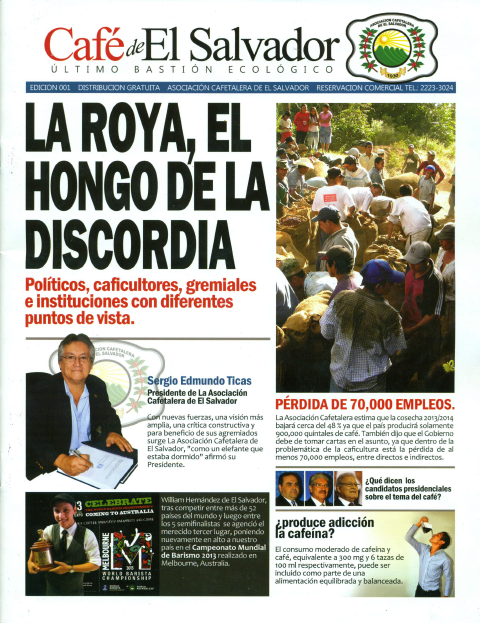This week my colleagues and I have been sharing perspectives on the FEWS NET Special Report on coffee leaf rust and food insecurity in Central America.
Today: El Salvador.
Juan Francisco Zambrana led our CAFE Livelihoods project in El Salvador from 2008-11, working with dozens of farmer organizations to help boost yields, improve quality and expand access to specialty markets. Since then, he has been working on a food security project in coffee communties funded by Green Mountain Coffee Roasters. He has watched the CLR epidemic unfold and worked to help smallholder farmers address it. As his comments below suggest, he has a keen grasp on what is happening in the coffeelands in El Salvador.
As our colleagues from Guatemala and Honduras did earlier this week, Francisco confirms the general findings of the FEWS NET report where El Salvador is concerned. And our colleagues from Guatemala and Honduras did earlier this week, Francisco also suggests that the report may undertstate the severity of the situation where El Salvador is concerned, especially among smallholders whose losses tend to be higher than the averages. His comments suggest that while the overall FEWS NET projection for El Salvador (households will be able to meet their food security needs) may be accurate, there may be families or pockets of families more gravely affected by the coffee leaf rust shock this harvest. Perhaps most importantly, he argues (compellingly, in my mind) that the report describes the symptoms of deeper failures at the farm, institution and system levels that must be addressed as part of any lasting solution.
- Does the FEWS NET report ring true based on your experiences on the ground at the intersection of coffee leaf rust and food security?
The key messages accurately capture the main impacts of coffee leaf, but perhaps not their full magnitude here in El Salvador. More importantly, the report is just the tip of the iceberg. It describes the symptoms of coffee leaf rust but not the underlying causes of the crisis, which include failures at the farm level, where we haven’t had the the agronomic practices we need to be competitive and control disease. At the policy level, we haven’t had the investment we need to make the coffee sector thrive or the kinds of emergency contingency plans that should be triggered by a report like this. And the coffee trade itself is part of the problem: the prices farmers earn at origin rise and fall dramatically based on the commodity exchange while the price of a cup of coffee in the marketplace never does anything but rise.
- Is there any area in which the FEWS NET report diverges from what you are seeing in the field or any other important information that may have escaped its notice?
What we are seeing and hearing suggests there may be both smallholder farmers and coffee pickers who are more vulnerable than the report indicates. We are working with coffee cooperatives whose production has fallen by as much as 60 percent and whose demand for external wage labor is down by 80 percent. There are reports from the eastern part of the country that families dependent on the coffee harvest have seen their wages fall from $40/day to $5/day this harvest, leading them to eat less and reduce the diversity of their diets. Some smallholders and farmworkers alike have begun migrating to the capital, where the demand for low-skilled labor is minimal and where men tend to seek work as security guards and women as domestic workers. This pattern generates negative social impacts in families separated and communities torn by migration that the report does not address.
- From your perspective, what kinds of urgent support are needed over the short term to alleviate the acute risks that smallholders and farmworkers are facing, and what measures are needed to bolster the sector over the medium-to-long term?
Short-term: emergency assistance to families of farmworkers and smallholder coffee growers to ensure they get the food they need while creating incentives for reinvestment in their farms and families. Medium-term: build public-private allianes to boost production and quality on coffee farms at medium to high elevations, which have what it takes to compete on international markets; at lower elevations where coffee’s future is more precarious, diversify production with cacao, honey and other products to reduce reliance on coffee income. Long-term: local and national policies to catalyze value chain development that particularly support coffee as an engine of economic development and environmental services in coffee-growing watersheds.



